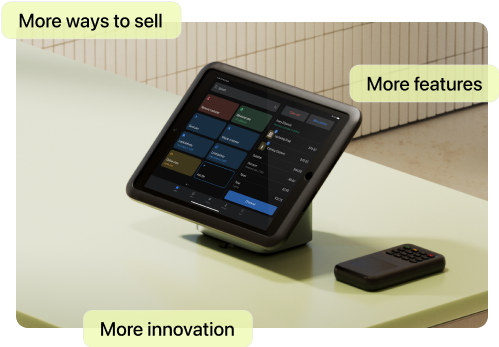Imagine you’ve left an $80,000-a-year tech job to finally start your own business. You use your own savings to fund the business, work 40-hour weeks without taking a salary, and even use your own car for making business deliveries.
On paper, it looks like the business is profitable. But have you considered the implicit costs? These hidden costs—the income you’re giving up by using an asset you own—affect every small business. Understanding implicit costs can help you make more effective decisions about your intangible and tangible assets.
What is an implicit cost?
Implicit costs are a type of opportunity cost—also known as imputed costs, implied costs, or notional costs. They’re hard to quantify because they’re non-monetary opportunity costs that are hypothetical in nature. You’re not paying for them, and they won’t appear on financial statements. Even though these costs aren’t on the books, they’re crucial for understanding the true profitability of a business and can influence how you distribute internal resources.
When you use an asset you own—whether that’s your time or your office space—that results in a loss of income, you incur an implicit cost. These costs represent the income or opportunities you sacrifice when you use your own time, money, or resources for your small business instead of using them elsewhere. Implicit costs don’t mean your business is losing profit, but you or someone else at your business may be missing out on potential income.
For example, if a business owner spends 40 hours a week working in their shop without drawing a salary, there’s no visible expense recorded. But if they could earn $60,000 a year doing the same work for another company, that forgone income is an implicit cost. Similarly, using $50,000 of personal savings to fund the business instead of investing it in stocks or a savings account comes with a lost return—say 5% or $2,500 per year—which you should also count as an implicit cost.
Common implicit costs vs. explicit costs
Implicit and explicit costs serve different purposes in business analysis. Explicit costs are all of the expenses you incur while operating your business. You can quantify them easily because you pay for them with your company’s assets. They include expenses like:
-
The salary you pay your workers
-
Your office rent
-
The raw materials you need to create your products
-
Utility bills, such as electricity, water, gas, and internet
-
Shipping and delivery costs
Implicit costs don’t appear on your company’s financial statements because they don’t involve cash outflow. Here’s a list of common implicit costs for small businesses:
-
Owner’s time and labor. If you forego a salary or pay yourself less than what you could make working for another company, that’s an implicit cost.
-
Owner’s capital investment. If you skip investing in bonds or stocks to invest in your company instead, the business profits you miss out on represent an implicit cost.
-
Use of owned real estate. If you own your office space outright, the imputed costs equal the earnings you could generate by renting the space out.
-
Time spent training new employees. When you pull an existing employee from their normal duties to train a new employee, that’s an implicit cost.
-
Depreciation of personal assets. If you use your personal car to make deliveries, the wear and tear on your vehicle is an implicit cost. Similarly, if you own servers that you let your company use to host its operations, that represents an opportunity cost.
-
Lost business or education opportunities. When you or your workers sacrifice time to focus on the business, you might delay or forgo higher education, which could have led to higher-paying job opportunities.
-
Turning down paid opportunities. Declining paid speaking engagements, collaborations, or client work due to time constraints from running your business creates implicit costs.
How explicit costs affect accounting profit
You use explicit costs to calculate accounting profit—in other words, your company’s net income. For example, suppose you spend $1,500 on explicit costs for the month, but you generate $5,000 of revenue. In this scenario, your accounting profit would be $3,500.
How explicit and implicit costs affect economic profit
To calculate economic profit, you’ll include both explicit and implicit costs for a more realistic view of your company’s profits.
Calculating implicit costs can be challenging, especially when they’re hypothetical—like the money you could earn by completing your master’s degree instead of starting a company. You won’t find a concrete number for situations like this.
You can solve this by examining comparative or average costs. With the master’s degree example, you might use the average salary for someone with that degree as your implicit cost baseline instead of your current earnings.
Using the same explicit cost example as above, let’s add the $1,000 in wages you didn’t pay yourself for the month—the average salary for someone in your position. Your economic profit would be $2,500.
You also need to consider what you could earn if you left a high-paying job. For example, if your previous role paid $150,000 annually, that becomes an implicit cost that would push your economic profit into negative territory.
Adding implicit costs to your accounting records increases your overall expenses, but these costs can also help you identify savings opportunities. For example, imagine you’re using a personal van for making deliveries. Renting it out could earn you $500 a month—that’s the implicit cost. However, if you hire a delivery service for only $250 a month, you’ll save $150 in opportunity costs.
How do implicit costs affect business decisions?
Understanding implicit costs is essential for determining how to use company resources effectively. This means thinking beyond your budget and asking: What value could my time, space, or capital generate if I used them differently?
When you factor in implicit costs, you can use your limited resources more strategically and make decisions based on total economic value, not just visible expenses. The goal is to maximize total return, not simply minimize costs you can see on paper.
Let’s examine how you might apply this thinking in a few common situations.
Time allocation
Imagine running your own business requires 20 hours weekly on accounting tasks. You’re not an accountant, but you prefer handling this work rather than outsourcing it. If you value your time at $50 an hour, the implicit cost totals $1,000 weekly. After researching, you find a bookkeeping service that charges $500 monthly for these tasks. You’d weigh the implicit costs against this explicit cost to determine if outsourcing would free up your time for higher-value work.
Property use
Property or asset use present common considerations when evaluating implicit costs comprehensively. Imagine you own a small storefront where you operate your nail polish shop. If you rented out this storefront instead, you might earn $3,000 monthly. If your monthly profit minus this $3,000 and your other explicit costs doesn’t break even, you might decide to rent the space and relocate to a smaller location.
Free labor
Family-owned businesses often rely on free labor from relatives, but what would happen if you needed to pay for that work? If your family members work 20 hours weekly for free, and you typically pay employees $15 hourly, you have $300 in implicit labor costs each week. If you lost your unpaid workers, could you afford to pay wages to replacement employees? Planning for growth or succession requires accounting for all resources—including “free” ones.
Implicit cost FAQ
Is labor an implicit cost?
No, labor is an explicit cost—as long as it’s paid. Wages are direct out-of-pocket costs that you pay to keep your business running smoothly.
What is an example of an implicit cost?
An example of an implicit cost could be the wages you’re not paying yourself while waiting for your company to grow. Another could be the interest you’re missing by investing money in your company instead of a high-yield savings account.
Is implicit cost a hidden cost?
Yes, implicit costs are often considered hidden costs because they don’t involve direct monetary exchange. You often won’t notice these missing costs because they’re intangible.







